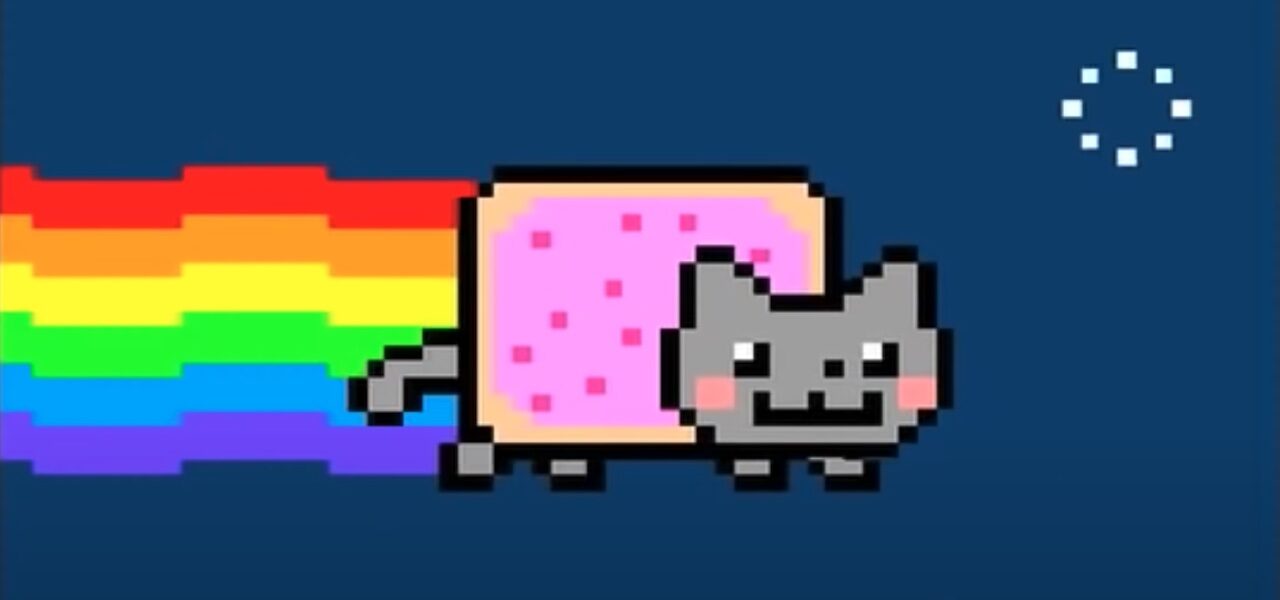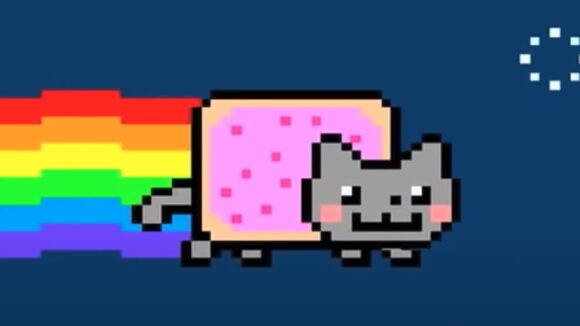

A Decade-Old Animated Meme Has Just Sold For $600,000. Here’s What That Means For Artists.
You’ve probably seen Nyan Cat, the cantering 8-bit pop-tart cat. Since it was posted online by illustrator Chris Torres in April 2011, the animated loop has racked up more than 185 million views on Youtube alone and inspired remixes, fan art, and even a cryptocurrency (Nyancoin, in case you were wondering).
In other words, it’s a priceless piece of meme history. Well, not quite: at least one person was willing to put a price of $600,000 on it. That’s how much Nyan Cat sold for at auction on Friday. On Twitter, Torres celebrated: “Just opened up the flood gates to the future of meme economy in the Crypto universe, no big deal.”
Why so much money? And how can you even buy a meme? Read on to learn more about the fast-growing digital art (or “crypto art”) market — and the tokens fueling the boom…
Who sold Nyan Cat?
Torres placed the meme on Foundation, an online marketplace for digital media, last Thursday. Specifically, he was selling a unique version of the work, for which he had created a non-fungible token (NFT). After frenzied bidding, it went for 300 Ether (another cryptocurrency), which was worth around $600,000 at the time.
Non-fungible what?!
NFTs are a type of digital file created on the blockchain (the same technology underlying cryptocurrencies like Bitcoin). Each file is tagged with information about who created it, who has previously owned it, and who currently does so. This info — or metadata — can’t be modified or deleted. As such, it can serve as a mark of authenticity: each NFT is identifiably unique.
So does the Torres-minted file look different from other Nyan Cat files?
The metadata, while accessible to third parties, doesn’t affect how the file looks or functions. NFTs can still be shared across the internet like any other file.
What’s the point?
All kinds of media can be minted as NFTs, but let’s focus on art. When you upload digital artwork to, say, Youtube or Tiktok, you’re generally handing the platform a license to use, reproduce, and monetize the file in all kinds of ways. NFTs enable the artist to sell their art directly to customers and — in theory — build up their profile without relying on these platforms. Meanwhile, the buyer, gets the digital equivalent of, say, an original painting.
There are still costs, though. Minting one NFT costs around $100 and transaction fees are incurred when files are bought or sold.
So can a buyer sell their NFT on?
Of course. Nyan Cat’s sale price speaks of the growing market for NFT-minted crypto art. Animation artists like Justin Roiland have got in on the act: the Rick and Morty co-creator sold artwork on NFT marketplace Nifty Gateway, netting as much as $290,100 for one drawing. On Thursday, Christie’s will become the first major auction house to auction a standalone NFT work of art.
Whether this market is sustainable, or merely a bubble fueled by bored traders in lockdown, remains to be seen. Torres, for one, sees NFTs as an opportunity for artists. As he wrote in his tweet: “I hope this inspires future artists to get into #NFT universe so they can get proper recognition for their work!”
Any downsides to the tech?
There’s a big one, which coverage of NFTs often omits: the carbon footprint. Blockchain transactions consume an enormous amount of energy. In a Medium post, artist Memo Akten analyzed transactions relating to around 18,000 crypto art NFTs, and found that the average token had a footprint equivalent to a European Union resident’s total electric power consumption for more than a month. Artists selling these files can quickly rack up dizzying levels of emissions.
